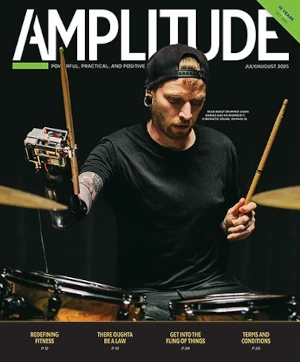Getting back on the road after limb loss involves more than physical adaptations and logistical hacks. It requires a new mindset.
By Rebecca Levenberg | Images by Rebecca Levenberg
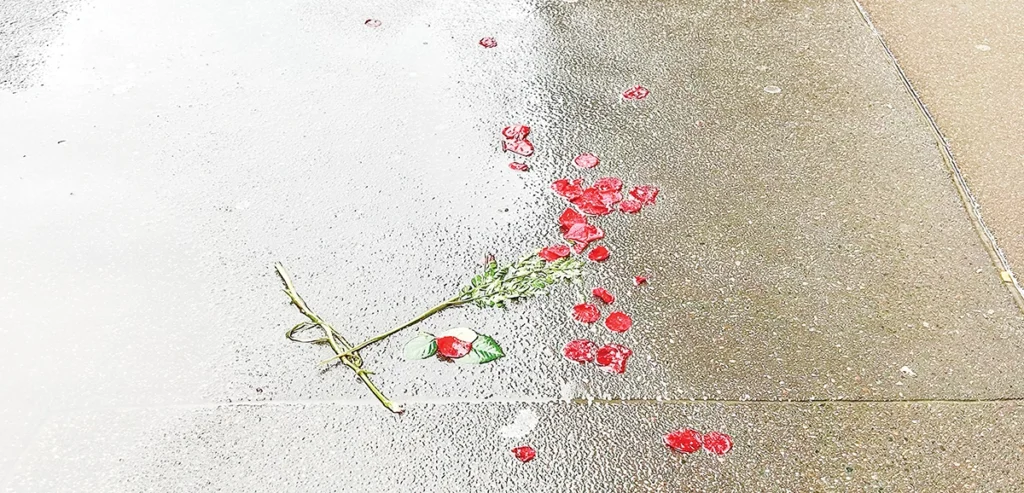
On the first day of the Paris Writing Workshop, I was already falling behind.
I limped up the last step of the Métro station, squinting into the late afternoon sun. My prosthesis rubbed against my skin. My right leg ached. Commuters rushed past me. I focused on the Art Deco subway tiles and willed my body to carry me back to the apartment.
Then, on the sidewalk, something caught my eye. A bright pop of red. A single rose petal. Vibrant yet forgotten. Crushed by a thousand Parisian shoes.
Was I the only one who noticed it?
I felt like that petal. Too slow in a city that moved too fast.
I knew this trip would be a stretch for me. Long before I applied to this travel-writing class, I emailed the organizer to ask about accessibility. Would there be an elevator in the building? How much walking would be necessary? I had an above-knee amputation—would I be able to keep up? The answers sounded flexible, so I was optimistic. As an experienced traveler, I would adapt.
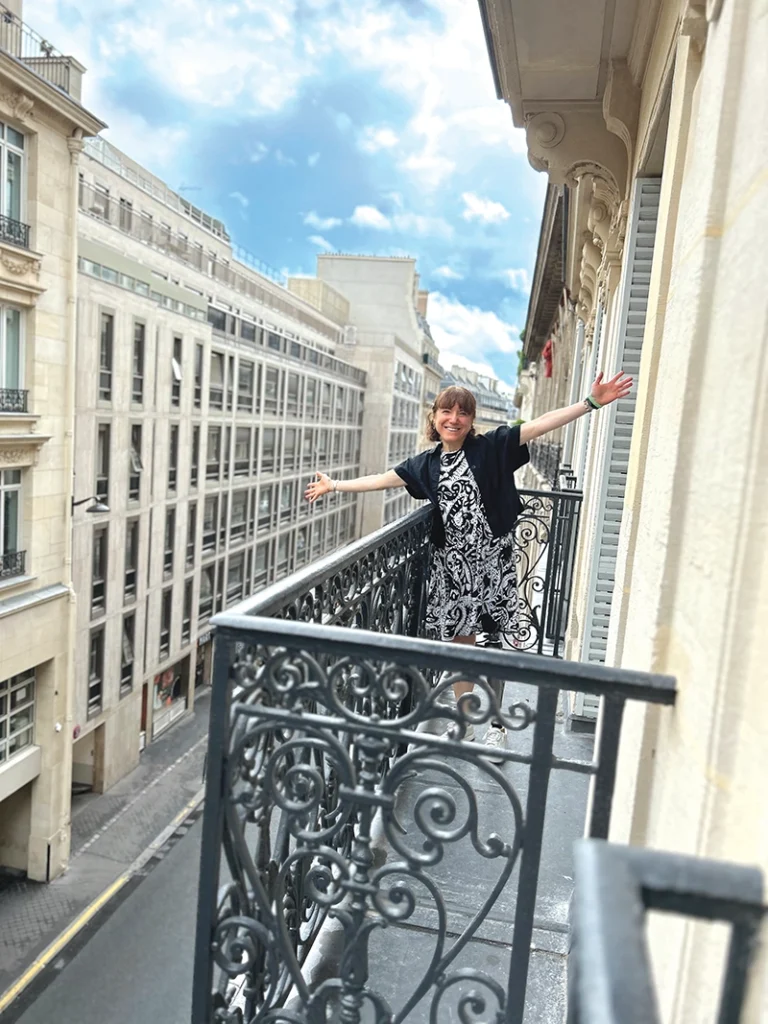
I found a friend who also wanted to see Paris. We’d go together, share an apartment, and explore Paris on our own. I researched Métro lines and plotted my commute on a laminated street map. I read about our new neighborhood, gathered up prosthetic supplies, and practiced my high-school French.
For months before the trip, I got my body into shape. I walked to work instead of taking the bus, ran errands on foot, and experimented with new shoes. My friends joked that I was training for the Tour de France, and they weren’t far off. But I was determined to keep up with my able-bodied classmates and absorb all the class had to offer.
On the morning of the first day, I left the apartment hopeful and excited. I couldn’t wait to learn from Rolf Potts, a travel writer I admired. I couldn’t wait to meet the other aspiring travel writers. I couldn’t wait to explore Paris!
As I strolled through the city toward the Left Bank, wrought-iron balconies rose above the tree-lined avenues. Sunlight glinted off the Seine. When I met up with the group, we embarked on a 90-minute “Literary Paris” walking tour, arriving at our classroom three miles later.
Phew; that start was tougher than I’d expected. I ducked into the tiny restroom down the hall to adjust my prosthetic socket. After a few hours, we were dismissed to get lunch in the neighborhood. That meant walking again, crossing the four-lane Avenue de l’Opéra, and hunting through a three-story Monoprix department store to locate the emporter (takeout) section of prepared food. Salad in hand, I trudged back to class to sit for another few hours. When it ended, I refitted my prosthesis yet again and left for the Métro station. I was too tired to notice the signs pointing toward out-of-the-way elevators. Instead, I descended dozens of steps and boarded a train toward “home.”
Now, here I was. Flattened and left behind like that rose petal on the sidewalk. And it was only Monday.
When I finally reached the apartment, I collapsed into bed, discouraged and in pain, cradling a towel filled with a few meager ice cubes I salvaged from the freezer. How did this happen? I asked myself. All my careful preparations had been intended to avoid this exact situation. What had I overlooked?
The truth is, I hadn’t erred in my planning. I had simply neglected my physical needs in pursuit of my goals. In my many years of traveling with limb loss, I’ve developed my own definition of accessibility. It’s not just about the logistics of getting from Point A to Point B with all my parts intact. It’s about creating an overall experience that opens the door to curiosity, challenge, and joy. Travel hacks are part of that solution, but no accommodation works for everyone. We each have to find our own way to make travel accessible.
For me, that means traveling in a way that addresses my physical needs and my intellectual goals—my body and my mind. Achieving that balance feels like true accessibility.
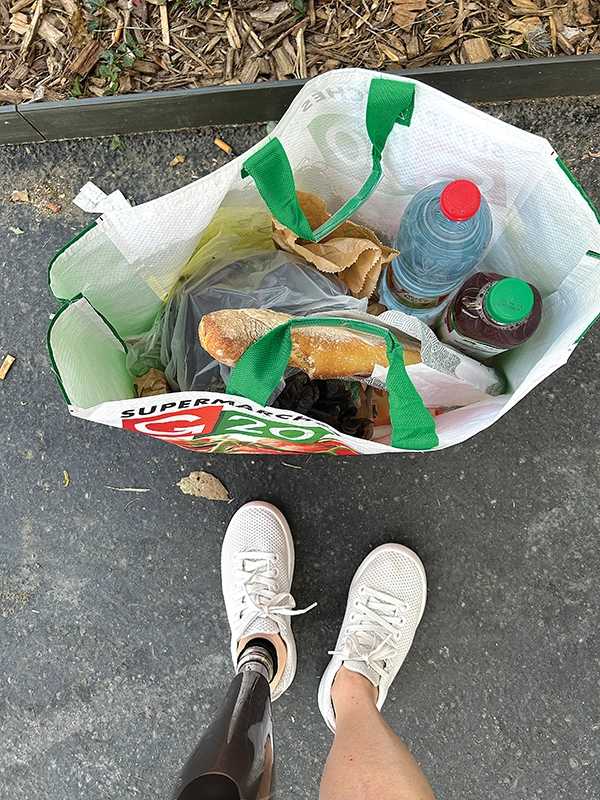
Unfortunately, I lost my equilibrium on day one of the writing workshop. When I signed up, I knew it would push my limits. But that first day? It shattered them. I needed to reboot.
I love to travel. Really, I do.
As a child, long before my amputation, I took road trips with my family to Washington DC, New England, and Canada. We flew to Los Angeles for the 1984 Olympics and visited the Grand Canyon. When I graduated from college, a friend and I spent eight weeks driving cross-country, hiking through national parks. I chaperoned endless field trips as a teacher, and during school vacations I jumped in the car for spontaneous road trips to visit my sister in Vermont. I even traveled solo to Europe on home exchanges during summer breaks.
Traveling was always my passion, and I aspired to write about it. But when I was hit by a truck on my bicycle in 2010, I thought those days were over. My left leg was crushed, and I had serious internal injuries. The accident left me with an above-knee amputation. Managing my body, even at home, became a full-time project. Taking that show on the road seemed too much to ask.
But as I was learning to walk on my prosthesis, two friends nudged me into their car for a weekend road trip to Maine. The perfectionist in me was skeptical. How could I travel with a body so demanding? If I couldn’t do everything, was it even worth leaving home? My friends persisted, so I waved my doubts aside. We packed my shower chair, medications, wound-care lotions, prosthetic supplies, crutches, and a mini-DVD player I watched at night when I couldn’t sleep. I joked that they were brave for taking me along, because I was terrified. I walked unsteadily on the sidewalk. I squirmed with discomfort during the ride. When we got stuck in traffic, my anxiety surged.
I felt like an exposed wound, unbandaged for the very first time, newly exposed to the air. But one evening at sunset, we stepped onto a floating dock for a boat tour of Casco Bay. I grasped the metal railing, smiling nervously as my friend snapped a photo. I sent it to my prosthetist with the message, “My C-Leg is at sea!”
That short weekend taught me a lesson I still carry wherever I go: Travel with limb loss is different—and sometimes difficult—but full of possibility.
The following autumn, I decided to attend my college reunion in Chicago. It would be my first time traveling by air as an amputee, so I talked with a friend from my prosthetist’s office. He was a young Army veteran, strong and active, with bilateral leg amputations. He walked like a champ and rode a bicycle, both goals I aspired to. I asked if he had any advice for a first-time flyer.
“Yeah,” he said. “Take the wheelchair.”
I laughed. “You? A wheelchair?”
He told me that airports are massive, and lines are long—two aspects of travel I’d never worried about when I had two legs. He explained that wheelchair service is free and easy to obtain. He said an escort would take me and my traveling companion through security to the gate, and then to baggage claim when I arrived at my destination.
His advice was spot-on. When I landed in Chicago, a motorized cart—a level up from wheelchair service at large airports—was waiting. It whisked me off to baggage claim.
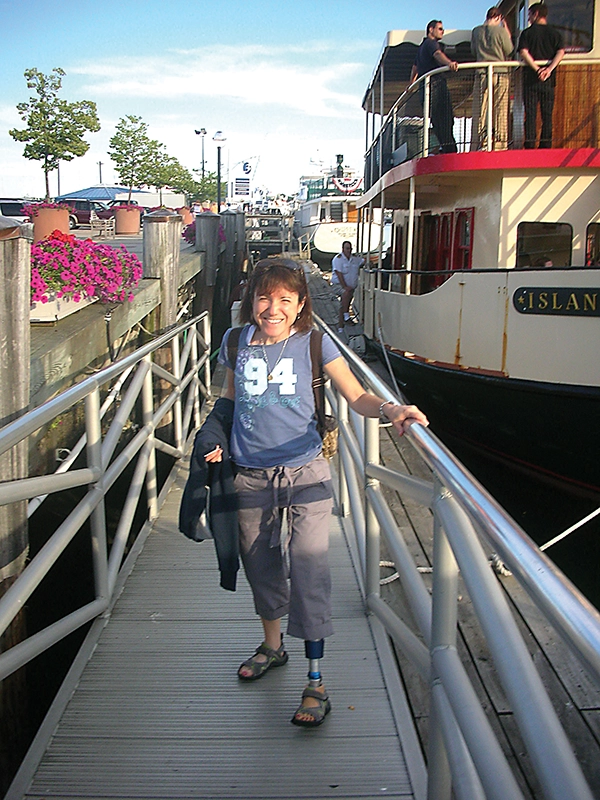
On that trip, my Chicago friends were eager to provide whatever help they could. Their kids asked questions about my “robot leg,” and I had fun teaching them. Even in the most awkward moments—such as when I needed to remove my prosthesis—my friends accepted and embraced this new version of me. I realized I was still myself in this cumbersome body, even far from home.
As time passed, I grew braver and more independent. I considered driving to Vermont to visit my sister, an eight-hour trip, but the thought of it triggered intense anxiety (a lingering effect of the accident). I worried about sitting in my prosthesis for such a long time. But when I looked closely at the long route, I got an idea: I’d divide it into shorter “legs.” I loved local coffee shops, so I reframed the trip into a quest to find a new café every two hours. Instead of a daunting drive, it became a series of small-town coffee runs, which satisfied my curiosity, need for movement, and love of caffeine. (By the last stop, I had to order decaf.)
That change in perspective is what made the trip accessible. By redefining it as a New England coffeehouse tour, I turned an imposing journey into a relaxing, pleasurable one. And I didn’t need any specialized equipment. I just needed to break it down into manageable parts.
Without realizing it, I’d taken my first step toward creating accessible travel on my own terms.
A search for the word accessible on the Americans with Disabilities Act website (ADA.gov) yields more than 1,000 results. This isn’t surprising. Accessibility is complicated. It means different things to different people, all the more so when we venture into unfamiliar territory. Certain accommodations are non-negotiable. A stairless entry, roll-in shower, or extra-wide doorways may be required. But we each have to define accessible travel for ourselves.
I’ve gone many places since those early trips to Maine, Chicago, and Vermont. Travel is such a passion that I even structured my recovery around “the journey of a thousand miles,” with a blog to document each step. There were many victories along the way, but also many mishaps. New hotel rooms were difficult to navigate. I got skin rubs from sitting or standing too long in my prosthesis. On one trip, my microprocessor knee malfunctioned, locking my leg straight. With each step, I had to hike onto the toes of my other foot, causing a stress fracture that took weeks to heal.
After more than a decade, I’m still finding my way. But over time, I’ve learned that the three pillars of accessible travel for me are pace, passion, and improvisation.
Wherever I go, I strive to maintain a comfortable pace. I enjoy famous landmarks and must-see tourist sights, but they’re often taxing on my body, so I don’t line them all up back-to-back. Instead, I alternate high-intensity days with leisurely ones that allow me to explore my destination on a more intimate scale. If I spend one day in Denmark riding the train to Kronborg Castle and climbing 142 stairs to the top of the tower, I spend the next day relaxing at a Christmas market, people-watching in a local café, or taking a meandering walk through town. These down days aren’t wasted time to me. They’re an important part of the experience, a chance to savor my destination and soak in details.
A slower pace goes hand in hand with my passions. For me, one of the joys of travel is to participate in everyday life that’s usually hidden from a tourist’s eyes. By taking extended stays in one location, rather than hopping from place to place, I get to experience the culture like a local. I can shop at the neighborhood supermarket, ride public transportation, become a regular at the local coffee shop, watch parents going to work and kids going to school, even take a baking class. Once, on a subway platform, a woman asked me for directions! You know you’ve achieved true accessibility when others seek your help in getting around.
Most important, I always leave room for possibility. While walking in Quebec one time, I discovered a glass-blowing studio where the artists gave free lessons, and I ended up making my own color-swirled glass ornament. Later, while waiting for a cab, I met a businessman on his way to the dry cleaners. He was dressed for work, so I wondered why he’d stopped to chat. A few sentences in, he shifted his bundle of clothes into one arm and tugged up his pant leg to reveal—you guessed it—a prosthesis just like mine.
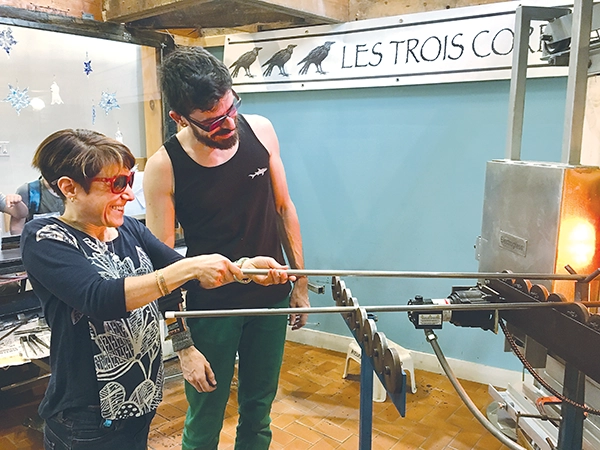
The best adventures are often unscripted, but planning is still essential. I prefer to travel with a friend, especially on longer trips. I’m in charge of my own needs, but in case of emergency, we have each other. Once, in the Madrid airport, the transport staff lost track of me when I ducked into a restroom to adjust my prosthesis. These types of situations would rattle me as a solo traveler, but with a friend they can be fun.
For accommodations, I’ve learned that an apartment works better than a hotel because I can keep food in the kitchen. I study photos and reviews for layout and location. I can climb stairs, but they’re hard on my sound leg, so I prefer to stay on one floor. I look for a place that’s centrally located and walkable to shops and sights, and I use that as my base for the entire trip. That way, I don’t have to adapt to a new room every night.
Even with careful planning, I’m never sure exactly what awaits. On a trip to Nice, my apartment building had a winding, dungeon-like stairwell (which was definitely not in the photos). To make matters worse, the ceiling lights worked on an automatic timer, leaving me—a very slow stair-climber—constantly in the dark. Travel is an exercise in flexibility and workarounds. As long as no one gets hurt, sometimes it’s best to laugh and keep moving.
For all the miles I’ve covered, I’m still learning as I go. Traveling with limb loss is a custom fit, with enough nuts and bolts to build a high-tech wheelchair or prosthesis. Your definition of accessibility will differ from mine. But however you define it, accessible travel involves making tradeoffs that address our goals and our needs. We have to chart our own path and write our own guidebook.
On day two of the Paris Writing Workshop, I was determined to regain my balance and create an accessible experience. That first day, I’d tried to do everything. Going forward, I needed to make choices that prioritized my body and supported my overarching goals—to improve my skill as a travel writer and to explore Paris through that lens.
I dug into my tool bag and pulled out strategies I knew would work. First step: slow the pace. On the second morning, I took a short walk around the block before breakfast to check the fit of my prosthesis. I packed a simple lunch of leftovers so I wouldn’t need to walk again at noon. I left early for the Métro, took my time, and used the elevators instead of the stairs. When class ended that day, my classmates headed over to the Musée d’Orsay, but I opted out. Instead, I ambled home and stopped at a smoothie shop on the way. There, I met a woman who’d grown up in Paris and spoke English with a charming British accent. She wanted to practice her English with me, so I practiced my French with her. Why not? I’d given myself the time.
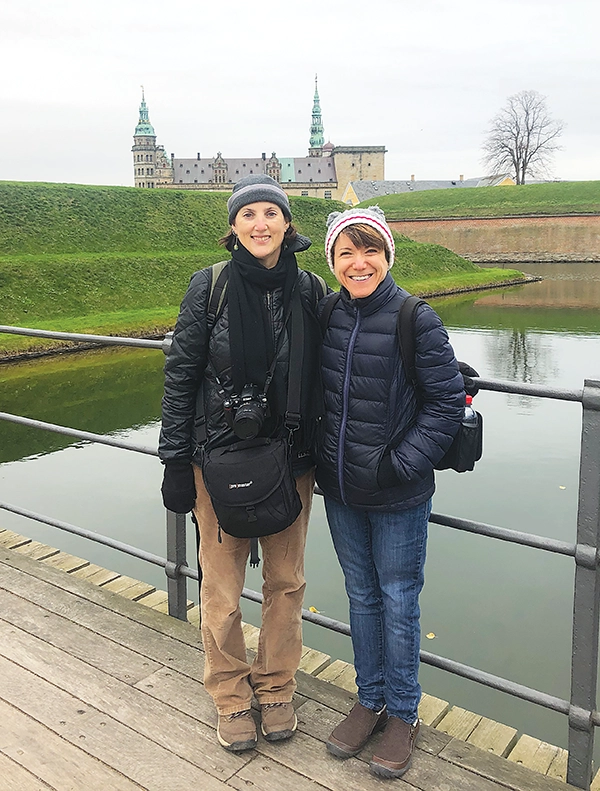
Step two: pursue passion. For the rest of that week, my daily commute to and from class became an adventure as interesting as any tourist attraction. I explored the Métro. I sampled hand-held quiches from every boulangerie along my walking route. I marveled at the details of everyday life—firefighters cleaning their engines, waiters setting tables on the sidewalks, sanitation workers rinsing the narrow cobblestone streets, all of them wearing pressed uniforms with neatly tucked shirts. I got to know the city from my new perspective as a Paris commuter.
Wherever I found myself, I experimented with the writing techniques we learned in class, listening for snippets of conversation and watching for telling details that might make good stories. One afternoon at a café, I sat next to a family of Japanese YouTubers as they dramatically unboxed a cheesecake. It was not what I expected to see on a busy Paris sidewalk. I pulled out my journal and took notes. It turns out, the tools that make travel more accessible for me—slowing down and going deep—also come in handy for travel writing.
Third step: embrace possibility. One day I got lost for three hours, wandering in circles, just outside my apartment. Another day, I got trapped in a turnstile at the Métro station. During a writing exercise at the Palais Royal, my leg came loose on a park bench. Our instructor encouraged me to channel these missteps into stories only I could tell. When he asked the class one morning to make a list of embarrassing moments from our lives, I immediately burst out: “How about from the last 24 hours?” It got a laugh.
As I got to know my classmates, I realized I wasn’t the only one who traveled differently. One of them had foot pain. Another had to answer calls from work. A third searched for a pediatrician for her sick toddler. We all became friends, and as the week wound down, they invited me to dinner. I’d been keeping to myself to conserve energy, but the class was almost over, so I could afford to splurge. I’d love to go, I said, but could they come to my neighborhood, so I’d be closer to home? They were happy to accommodate. And bonus: Because I’d been walking those streets each morning, I could suggest the perfect meeting place.
On our way to the Métro that night, my classmate and I put up our umbrellas in the misty drizzle. I pointed to the elevator entrance, a glass booth on the sidewalk just beyond the stairs. How many times had she passed it without noticing?
Then, on the damp sidewalk, something caught our eyes. A bright pop of red. A bouquet of rose petals, still on their stems, soaked with rain and crushed by a thousand Parisian shoes.
We paused to admire them. And we weren’t the only ones.
Rebecca Levenberg is an educator and writer. She coordinates the amputation support program at Jefferson Moss-Magee Rehabilitation in Philadelphia. Learn more at Levenberg’s blog, my-1000-miles.blogspot.com.



